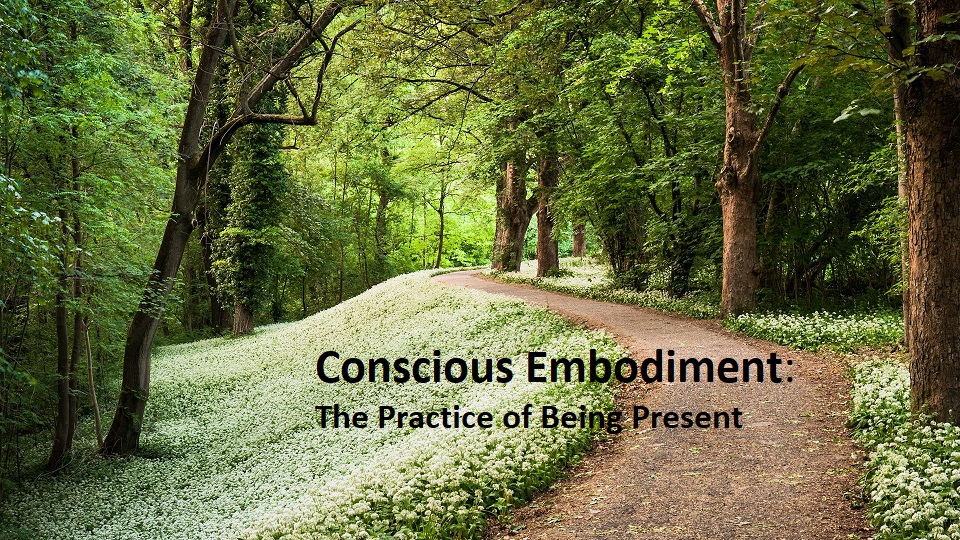
Making New Year's Resolutions
That You Can Keep

We are all familiar with the struggle to keep the resolutions we've made for the New Year, with following through and accomplishing the goal we've set out for ourselves. This is a very familiar refrain. Even if you are not personally familiar with this difficulty, it is a well-worn theme and a common complaint: making New Year's resolutions and sticking to them.
One of the major problems with New Year's resolutions – both with making them, and with sticking to them – is that they tend to be an expression of the conflict within ourselves. A conflict between the way we are and the way we think we should be; a conflict between the way we live our lives and the way we wish we lived our lives.
Inherent in New Year's resolutions is always a conflict between our usual patterns of behaviours, and a vision of who we either think we should be, want to be, or wish we could be. As with any internal conflict, it creates an either/or, win/lose situation. In this type of situation of internal conflict, we cannot be Present. We are not being present to that aspect of ourselves that continues the behaviours that we want to change, and instead we project to a desired, future, or fantasy version of ourselves.
In practising Presence, I practice being with and accepting myself as I am in the present. This means my whole self, including all my behaviours, my most and least favourable aspects, etc. Practising presence allows the resolution of the internal conflict. As rejection of some aspect of myself or of my behaviours morphs into acceptance through Presence, I no longer try to force change on myself.
Many people react to this idea with doubt and concern: "But if I just give up on trying to change myself or improve myself, then I'll just stay this way. I won't change anything. And these are things I really want to change or improve." However, this idea perpetuates internal conflict with yourself. It perpetuates the experience of splitting yourself into two parts: one which needs to be changed, and one which is trying to force that change.
Conflict also creates resistance. In this win/lose equation, if you are successful in creating change, there is a risk that the part of you that was invested in those patterns of behaviour is still there, its needs unmet, and that you will revert to those behaviours at some point in the future. If, as so often happens, you lose the struggle for change and those expectations remain unfulfilled, then you experience feelings of discouragement, self-judgment or even self-loathing,. This creates more internal conflict with yourself, more disharmony, more suffering. It also lessens the likelihood of future positive change each time this happens, as you become more discouraged in your ability to engage in change.
If, instead, you focus on practising Presence: being present to yourself as you are, with self-acceptance and self-compassion, then you becomes simultaneously aware of both the desire to continue engaging in this old pattern of behaviour, and the desire to change it.
If, in a spirit of awareness, acceptance and curiosity, you tap into the feeling associated with wanting to continue the behaviour, it will ultimately make it much easier to change it. Tapping into the feelings around it allows you to be very consciously aware of where and how within yourself you are actually invested in this behaviour, and why. Sometimes, this will help you to be aware of a need you have. You may choose to continue the behaviour in a more limited way in order to satisfy that need, or you may find another way to satisfy that need that is more in line with the way you truly want to be.
Likewise, it is both useful and powerful to take time to tune into the feelings associated with wanting to make change. Are the feelings you access all about self-rejection? If so, that invites and challenges you to explore this. Do you really want to make life choices based on rejecting yourself? If you sit with, and explore, these types of feelings, you will often move past them to connecting with a positive motivation, a positive desire, a positive intention. Now, you already have those mentally, in the form of thoughts. But the key is tuning into a positive intention or motivation or goal that you can actually feel.
So, for example, you may have been trying to push yourself to go to the gym, or to otherwise start some form of physical exercise. You know that you will be healthier if you exercise. You know that you will feel good if you're getting physical activity, and you know that you will feel better about yourself if you're in good physical shape. And yet, despite everything you know, you never seem to be able to get yourself into a regular regimen of exercise.
If you move from what you know to what you feel, you may tap into any number of feelings around this, including self-rejection, or that it's hard work, that you just want to relax, etc. But take the time to connect with the positive feeling in your body associated with this goal – this could be a memory of how you felt in the past when you were in good physical condition and were exercising, or it could be positive feelings of accomplishment, energy or self-esteem. Allow yourself to connect with a physical feeling of why you want to do this, the physical feeling associated with the positive motivation of why you want to do this.
Now, your brain takes note. Feelings in the body – like emotions – tend to be more powerful and more persuasive than thought. As well, as I discuss in Listen to Your Heart, it has been shown that feeling positive emotional states in your body has a direct impact on the brain. In Listen to Your Heart I discuss this in terms of Making Choices That Are Right for You: this applies to New Year's resolutions, as well. Tapping into positive feelings states creates a sense of internal harmony, from which you will make choices that are harmonious with positive feelings, rather than stemming from internal conflict and creating tension.
Moving from a state of internal conflict, of trying to force change upon yourself, or of trying to convince yourself to do something you don't really want to do, to a state of self-acceptance through practising Presence, creates internal harmony and coherence. Systems – including mental and emotional systems – become more aligned in a process which is called entrainment. If you then tap into, not what you think you should do, but what you feel a positive motivation, a feeling that you want to do, then you will be much more likely to follow through on your resolution.
The reason I don't make New Year's resolutions, is that: a) I don't want to set myself up in a win/lose situation based in internal conflict with myself. I see New Year's resolutions as setting up self-improvement and personal growth as a once a year, high-stakes, succeed or fail enterprise.
What I have found by practising Presence, is that I can be aware on a more ongoing basis of disharmony within myself and then act to restore harmony. Sometimes that disharmony is a result of self rejection, of internal conflict and one aspect of me pushing against another. Sometimes, however, disharmony is a gradually emerging, organic sense of discomfort with my own pattern of behaviour. As I tap into this discomfort with a pattern of behaviour, I become more aware of not wanting to continue it, I become more aware of why I am uncomfortable with it and why I want to change it. The decision to change it then comes organically out of this felt sense this felt awareness, charged with positive motivation and feeling, and without internal conflict. At that point, the whole of me, in an integrated way, is on board with the decision, with the choice, and with following through on it with action.
It will still be work: changing habits usually is. There may be moments when I do encounter resistance, but if all of that is contained within a practice of acceptance, a practice of being present and a practice of self-compassion, then I can move through that in whatever way I choose to, without setting myself up for right/wrong, good/bad, success/failure.
If you have made, or are considering New Year's resolutions, try working with the exercises in Listen to Your Heart to see how these resolutions resonate in your body. Practice being Present to what you feel (not how you feel, but what you feel) both about the behaviour you want to change, and the behaviour you are proposing to adopt. Allow yourself to experience all feelings and sensations around this and to accept anything you encounter exactly as it is, without judgment. Finally, allow yourself to make a choice, a resolution that actually feels good when you think of doing it.
